Dish gardening is a wonderful way to create a stunning mini landscape in a shallow container, bringing nature indoors. Whether you have limited space or simply want to add a touch of greenery to your home, dish gardening offers a creative and rewarding solution. In this beginner’s guide, I will walk you through the basic steps of dish gardening, providing valuable tips to help you create your own miniature green sanctuary.
Key Takeaways:
- Thoroughly water your plants before planting in a dish garden.
- Remove plants from their pots carefully to avoid damaging the roots.
- Fill the container with fresh planting mix and lightly water.
- Add accents like twigs and stones for added visual interest.
- Place your dish garden in an area with the appropriate amount of light for the chosen plants.
By following these basic steps and caring for your dish garden properly, you can enjoy the beauty and tranquility of a miniature landscape right in your own home. Let’s get started!
Starting Your Dish Garden: Selecting the Right Plants
Before you start planting your dish garden, it’s crucial to choose the right plants that will thrive in a confined space and complement each other aesthetically. When creating a dish garden, you have the opportunity to bring together a variety of plants, each with its own unique features and characteristics. Consider plants with different sizes, shapes, colors, and textures to create an interesting and harmonious composition.
To make the selection process easier, here are some plants that are well-suited for dish gardens:
- Hens and Chicks (Sempervivum sp.): These succulent plants are easy to care for and come in a range of colors. They form rosettes and produce offsets, making them ideal for filling in empty spaces in your dish garden.
- Miniature Ferns: Ferns add a delicate and airy touch to your dish garden. Look for varieties such as Maidenhair Ferns or Boston Ferns, which thrive in low-light conditions.
- Mosses: Mosses can create a lush carpet-like effect in your dish garden. They prefer moist conditions and can thrive in shaded areas.
- Sedums: These drought-tolerant succulents come in various shapes and sizes. Look for varieties like Sedum ‘Angelina’ or Sedum ‘Burrito’ to add interesting textures to your dish garden.
Remember that not all plants have the same care requirements. Before incorporating a plant into your dish garden, research its specific needs for light, water, and temperature. This will ensure that all the plants in your dish garden will thrive together and require similar care.
By carefully selecting the right plants for your dish garden, you can create a beautiful and long-lasting miniature landscape that brings a touch of nature into your home.
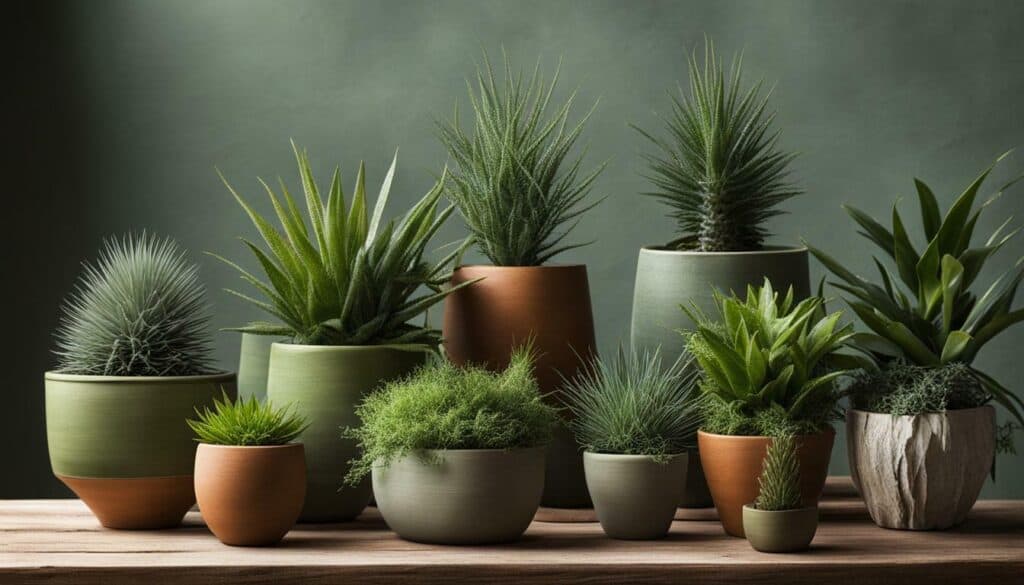
| Plant | Light Requirements | Watering Needs | Special Considerations |
|---|---|---|---|
| Hens and Chicks (Sempervivum sp.) | Full sun to partial shade | Allow soil to dry between waterings | Well-draining soil |
| Miniature Ferns | Low to medium light | Keep soil evenly moist | Mist foliage regularly for humidity |
| Mosses | Shade to partial shade | Keep soil consistently moist | Mist with water to maintain humidity |
| Sedums | Full sun to partial shade | Allow soil to dry between waterings | Drought-tolerant, well-draining soil |
Preparing Your Plants for Planting
Properly preparing your plants before planting is essential for their overall well-being and successful growth in your dish garden. When it comes to dish gardening, it’s important to handle your plants with care to avoid damaging their delicate roots. Before transferring them to your container, make sure they are thoroughly watered. This will ensure that the plants are adequately hydrated before being planted.
To remove the plants from their pots without harming the roots, gently support the plant with your fingers and turn it upside down. Give the pot a light tap to loosen the root ball, ensuring that it easily slides out. When handling the plants, avoid touching or disturbing the roots too much, as this can hinder their growth.
Next, fill your dish garden container with fresh planting mix, leaving enough space for the plants. Gently place your plants into the container, ensuring that they are well-positioned and centered. Once all the plants are in place, lightly water the soil to help settle it and provide a welcoming environment for the roots to establish themselves.
After planting, consider adding a mulch of fine bark or small gravel to the top layer of soil. This not only helps to retain moisture but also adds an attractive finishing touch to your dish garden. Additionally, you can enhance the overall aesthetic appeal by incorporating accents such as twigs, stones, or miniature decorative elements to complement the plants and create a captivating landscape within your dish garden.
Some tips for preparing your plants:
- Choose plants that have similar light and water requirements to ensure they thrive together in your dish garden.
- Trim any damaged or unhealthy foliage to promote healthy growth.
- Consider the size and growth habits of your plants when arranging them in the container to create a visually pleasing composition.
- Keep in mind the mature size of the plants to avoid overcrowding and ensure adequate space for each plant to grow.
By following these essential steps in preparing your plants for planting, you will set a solid foundation for their growth and create a thriving dish garden that will bring beauty and tranquility to your indoor space.
Planting Your Dish Garden
Now that you’re ready to plant your dish garden, let’s explore the simple yet effective steps to bring your vision to life. Start by choosing a shallow container that has drainage holes to prevent waterlogged roots. Ensure the container is clean and free of any debris that could hinder plant growth.
Before planting, make sure your chosen plants are thoroughly watered. This will help ensure their roots are hydrated and ready for the planting process. To remove plants from their pots without damaging the roots, support the plant with your fingers and turn it upside down, giving the pot a light tap to loosen the root ball.
Once your plants are out of their pots, gently tease the roots apart with your fingers. In dish gardening, it’s best to leave the roots alone, as this will promote slower growth and help maintain the compact size of your plants. Fill the container with fresh planting mix, leaving enough space for the plants to be inserted comfortably. Make sure to leave a small gap between the top of the soil and the rim of the container.
When placing your plants in the container, arrange them to create an aesthetically pleasing composition. Explore different heights, colors, and textures to add visual interest to your dish garden. Once the plants are in position, gently firm the soil around their roots, ensuring they are secure and stable. Water lightly to settle the soil and remove any air pockets.
To add a finishing touch to your dish garden, top the soil with a mulch of fine bark or small gravel. This not only helps retain moisture, but it also adds a decorative element to your miniature landscape. Consider adding accents like twigs, stones, or small figurines to further enhance the beauty of your dish garden.
| Steps to Planting Your Dish Garden |
|---|
| 1. Select a shallow container with drainage holes. |
| 2. Thoroughly water your plants before planting. |
| 3. Remove plants from their pots and gently tease the roots. |
| 4. Fill the container with fresh planting mix, leaving space for the plants. |
| 5. Arrange the plants in an aesthetically pleasing composition. |
| 6. Firm the soil around the roots and water lightly. |
| 7. Top the soil with a mulch of fine bark or small gravel. |
| 8. Add accents like twigs, stones, or small figurines for decoration. |
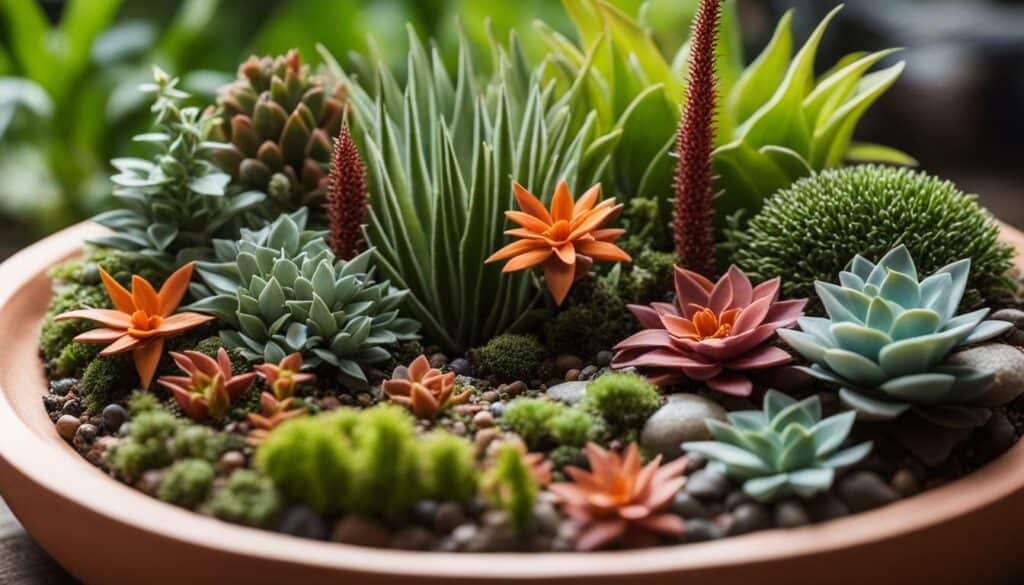
With these basic steps, you can easily create a beautiful and thriving dish garden. Remember to place your dish garden in a spot where it receives the correct amount of light for the chosen plants. Water your dish garden when the soil becomes nearly dry, being cautious not to over-water or let the soil become too dry. Fertilization is generally not necessary, but if needed, use a diluted liquid house plant food.
By following these steps and providing proper care, your dish garden can become a centerpiece of your home, bringing a touch of nature and serenity to your living space. Enjoy the process of creating and tending to your dish garden, and watch as it grows and flourishes into a miniature green oasis.
Caring for Your Dish Garden
Proper care is crucial to the health and vitality of your dish garden, allowing you to enjoy its natural beauty for years to come. Indoor gardening techniques are essential to maintaining a dish garden, and with a few simple steps, you can ensure that your miniature green oasis thrives.
When it comes to watering your dish garden, it’s important to find the right balance. Water the garden when the soil becomes nearly dry, but be cautious not to over-water or let the soil become too dry. Use your finger to check the moisture level in the soil before watering, and remember that dish gardens typically require less water than traditional potted plants.
Fertilization is generally not necessary for dish gardens, as the plants receive nutrients from the fresh planting mix. However, if you notice slow growth or signs of nutrient deficiency, you can use a diluted liquid house plant food to supplement the soil. Be sure to follow the instructions on the fertilizer package and apply it sparingly, as too much fertilizer can harm the delicate plants in your dish garden.
Finally, adding accents to your dish garden can enhance its visual appeal. Consider incorporating twigs, stones, or other decorative elements to create a unique landscape. These accents not only add aesthetic value but also provide a sense of texture and dimension to your dish garden. Experiment with different combinations and arrangements to find the perfect balance that complements your plants.
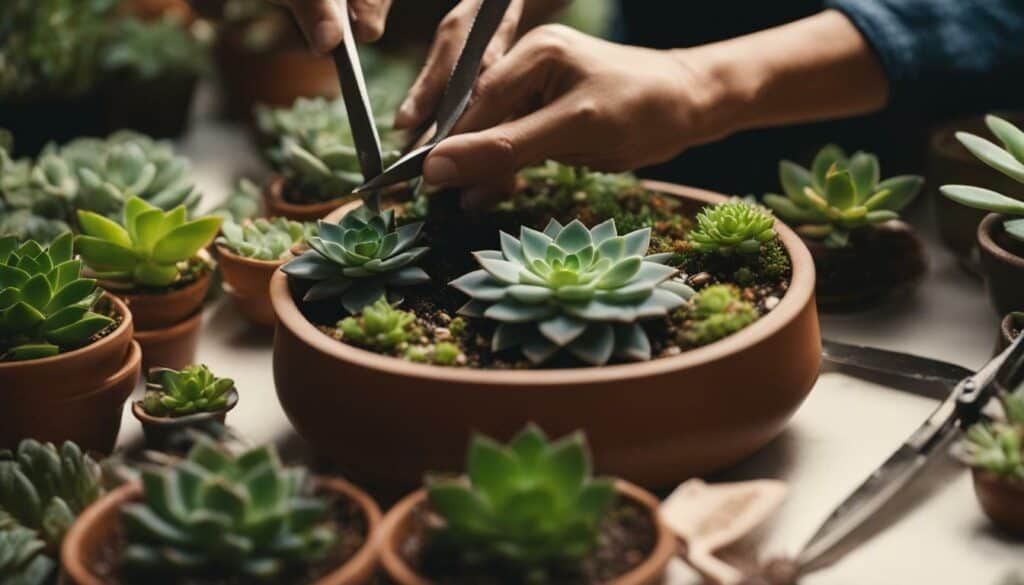
With proper care, your dish garden can become the centerpiece of your home, adding a touch of nature and serenity to your living space. Take the time to understand the specific needs of your plants, and make adjustments as necessary to create an environment that promotes their growth and well-being. By following these indoor gardening techniques, you can enjoy the beauty and tranquility of your dish garden for years to come.
Lighting Requirements for Dish Gardens
Understanding the lighting requirements of your dish garden is vital to ensure the well-being and growth of your plants. Indoor gardening techniques play a significant role in creating a suitable environment for your miniature green oasis. While each plant has its preferences when it comes to light, most dish garden plants thrive in bright, indirect light.
Place your dish garden in a spot where it receives bright but filtered light throughout the day. Avoid placing it in direct sunlight, as it can scorch the delicate foliage. If your plants start to show signs of stretching or yellowing leaves, it may indicate that they are receiving too little light.
On the other hand, if your plants begin to wilt or develop brown spots, it may be a sign of too much direct light. Experiment with different locations to find the perfect balance for your plants. Additionally, rotating your dish garden every few days can help ensure that all parts of the plants receive equal light exposure.
| Plant Type | Light Requirements |
|---|---|
| Succulents | Bright, indirect light |
| Ferns | Filtered, indirect light |
| Herbs | Direct sunlight (4-6 hours) |
| Moss | Low to moderate light |
“Understanding the lighting requirements of your dish garden is vital to ensure the well-being and growth of your plants.”
Remember that every plant is unique, and it’s important to research the specific lighting needs of each plant you include in your dish garden. By providing the right amount of light, you will help your plants thrive and create a visually stunning green oasis in your home.

References
- Garden Design Magazine – Dish Gardens: A Quick Start Guide
- Better Homes & Gardens – How to Create a Dish Garden
- House Beautiful – Indoor Gardening: How to Take Care of Indoor Plants
Dish gardening is a popular way to create a mini landscape in a shallow container. When adding plants to your dish garden, make sure they are thoroughly watered before planting. To remove plants from their pots without damaging the roots, support the plant with your fingers and turn it upside down, giving the pot a light tap to loosen the root ball. For dish gardens, it is better to leave the roots alone for slower growth. Fill in the container with fresh planting mix and water lightly. Top the soil with a mulch of fine bark or small gravel, and add accents like twigs and stones. Dish gardens should be placed in a spot where they receive the correct amount of light for the chosen plants. Water the dish garden when the soil becomes nearly dry, and be cautious not to over-water or let the soil become too dry. Fertilization is generally not necessary, but if needed, use a diluted liquid house plant food. Dish gardens can be a centerpiece of your home if cared for properly.
Watering Your Dish Garden
Watering is a critical aspect of maintaining a thriving dish garden, and mastering the proper techniques will contribute to its overall success. When it comes to watering your dish garden, it’s important to strike the right balance. Over-watering can lead to root rot and other plant diseases, while under-watering can cause stress and dehydration for your plants.
One effective way to determine when to water your dish garden is to check the moisture level of the soil. Stick your finger about an inch deep into the soil; if it feels dry, it’s time to water. However, if it feels slightly moist, it’s best to wait a little longer. Remember, it’s better to err on the side of slightly underwatering than overwatering, as most dish garden plants prefer drier conditions.
To water your dish garden, use a watering can with a narrow spout or a spray bottle to ensure a gentle and controlled flow of water. Pour the water directly onto the soil, avoiding the foliage as much as possible. This will help prevent waterlogged leaves and reduce the risk of fungal diseases. Water until you see it draining out through the bottom of the container, ensuring that the roots are thoroughly hydrated.
Watering Schedule
Establishing a consistent watering schedule is essential for the health and longevity of your dish garden. Depending on the specific plants in your dish garden and the environment they’re in, you might need to water once or twice a week. Keep in mind that factors such as temperature, humidity, and the size of your container can affect watering frequency.
It’s important to monitor your dish garden closely and adjust your watering schedule accordingly. Pay attention to any signs of stress in your plants, such as wilting or yellowing leaves, as these can indicate the need for more frequent watering. On the other hand, if you notice the soil staying consistently damp or if your plants are showing signs of root rot, you may need to reduce your watering frequency.
Remember, each dish garden is unique, and it may take some time to find the perfect watering routine that suits your plants’ needs. By paying attention to the moisture levels of the soil, closely observing your plants, and making adjustments as necessary, you’ll be well on your way to creating a beautiful and thriving dish garden.
| Watering Tips: |
|---|
| Stick your finger into the soil to check for moisture before watering. |
| Water sparingly, aiming for a controlled flow directly onto the soil. |
| Don’t water the foliage excessively to avoid fungal diseases. |
| Establish a consistent watering schedule based on your plants’ needs. |
 Adding Accents to Your Dish Garden
Adding Accents to Your Dish Garden
Adding Accents to Your Dish Garden
Elevate the visual appeal of your dish garden by incorporating unique accents that add personality and charm to your green sanctuary. Creative container gardening allows you to showcase your individual style and create a miniature landscape that reflects your taste and aesthetic. Adding accents such as twigs, stones, and other decorative elements not only enhances the beauty of your dish garden but also adds visual interest and texture.
One idea for incorporating accents is by using small twigs or branches to create a natural-looking fence or trellis. Simply arrange the twigs around the edges of your dish garden, sticking them into the soil to secure them in place. This adds a touch of whimsy and creates a defined border for your miniature landscape.
Another idea is to place decorative stones or pebbles on top of the soil to create interesting patterns or pathways. This not only adds visual interest but also helps to retain moisture in the soil and prevents evaporation. You can choose stones of different sizes and colors to create a unique and eye-catching display.
To further enhance the beauty of your dish garden, consider adding small figurines or miniatures that complement the theme or style of your plants. These can include tiny garden benches, animal figurines, or even miniature fairy garden accessories. Carefully place them among the plants to create a whimsical and enchanting scene.
Table: Accent Ideas for Your Dish Garden
| Accents | How to Use |
|---|---|
| Twigs or branches | Arrange them around the edges of your dish garden to create a natural fence or trellis |
| Decorative stones or pebbles | Place them on top of the soil to create interesting patterns or pathways |
| Miniature figurines or accessories | Position them among the plants to create a whimsical scene |
Elevate the visual appeal of your dish garden with these creative container gardening ideas. Experiment with different accents and arrangements to create a unique and captivating miniature landscape that brings joy and tranquility to your indoor space.

Troubleshooting Common Issues
While dish gardening is generally low-maintenance, occasional problems can occur, but with a little knowledge, you can easily overcome them. Here are some common issues you may encounter while maintaining your dish garden and simple solutions to address them:
Pests and Diseases:
Pests and diseases can affect the health of your plants and hinder their growth. Keep an eye out for common pests like aphids, mealybugs, and spider mites. If you notice any infestation, gently wipe the affected areas with a cotton swab dipped in a mild soapy water solution. For more severe infestations, consider using natural pest control methods or consult a local gardening expert for advice. Additionally, be vigilant about signs of disease such as wilting or discoloration. If you suspect a plant is diseased, remove it from your dish garden to prevent further spread.
Overwatering and Underwatering:
Proper watering is crucial for the health of your plants in a dish garden. Overwatering can lead to root rot and fungal issues, while underwatering can cause wilting and stunted growth. To prevent overwatering, make sure the container has drainage holes to allow excess water to escape. Before watering, check the moisture level of the soil by inserting your finger about an inch deep. If it feels dry, water the plants thoroughly until the excess water drains out. On the other hand, if the soil feels consistently wet, hold off on watering to avoid drowning the roots. Remember, each plant has different water requirements, so it’s essential to research and understand the needs of the specific plants in your dish garden.
Lighting Issues:
Inadequate or excessive light can negatively impact the growth of your dish garden plants. Insufficient light can cause leggy growth and pale leaves, while too much direct sunlight can scorch the foliage. Observe the lighting conditions in your home and adjust the placement of your dish garden accordingly. If your plants are not receiving enough light, consider moving them closer to a bright window or supplementing with artificial grow lights. Conversely, if the plants are getting too much direct sunlight, move them to a spot with filtered or indirect light. With proper lighting, your dish garden will flourish and thrive.
By addressing these common issues promptly and taking preventive measures, you can ensure the longevity and beauty of your dish garden. Remember to monitor your plants regularly, provide the necessary care, and seek advice from gardening professionals when needed. With patience and attention, your dish garden will continue to be a delightful centerpiece in your home, bringing nature’s beauty indoors.

Conclusion
Dish gardening is a rewarding and accessible hobby that allows you to create your own enchanting green oasis, bringing nature into your home in a unique and creative way. Whether you’re a beginner or an experienced gardener, following the basic steps outlined in this guide will help you master the art of dish gardening.
Starting with the right plant selection is crucial for a successful dish garden. Choose plants that thrive in similar conditions and have similar growth habits. This will ensure that all the plants in your dish garden can coexist harmoniously.
When planting your dish garden, remember to give your plants a good soak before introducing them to their new home. This will help to prevent root shock and promote healthy growth. Once planted, ensure that your dish garden receives the right amount of light and water, as this will vary depending on the plant species you have chosen.
Don’t be afraid to get creative with accents and decorations in your dish garden. Adding twigs, stones, or other decorative elements can enhance the visual appeal of your mini landscape and create a unique focal point in your home.
By following these simple steps and caring for your dish garden diligently, you can enjoy the beauty and tranquility of nature right in your own home. Whether you place it on a windowsill or use it as a centerpiece, your dish garden is sure to bring joy and a touch of the outdoors to your everyday life.
What Are the Basic Steps to Successfully Planting a Dish Garden?
Small garden planting steps are vital for successfully planting a dish garden. Start by selecting suitable containers and ensuring proper drainage. Next, choose a variety of plants that thrive in similar conditions. Prepare the soil mix, fill the containers, and arrange the plants according to their sizes and growth habits. Water thoroughly and place the dish garden in an ideal location with adequate light. Regular maintenance is essential for the plants to flourish.
FAQ
Q: How often should I water my dish garden?
A: Water your dish garden when the soil becomes nearly dry. Be cautious not to over-water or let the soil become too dry.
Q: Do dish gardens require fertilization?
A: Fertilization is generally not necessary for dish gardens. However, if needed, use a diluted liquid house plant food.
Q: How should I remove plants from their pots without damaging the roots?
A: To remove plants from their pots without damaging the roots, support the plant with your fingers and turn it upside down, giving the pot a light tap to loosen the root ball.
Q: Where should I place my dish garden for the correct amount of light?
A: Dish gardens should be placed in a spot where they receive the correct amount of light for the chosen plants. Pay attention to their light requirements.
Q: Can I use any planting mix for my dish garden?
A: Fill your dish garden container with fresh planting mix to provide the necessary nutrients for your plants.
Q: Can I use any accents to enhance my dish garden?
A: Yes! Add accents like twigs and stones to your dish garden to enhance its beauty. Get creative and personalize your miniature landscape.
Q: How should I care for my dish garden?
A: Care for your dish garden by watering it when the soil becomes nearly dry, providing it with the correct amount of light, and avoiding over-watering or letting the soil become too dry.
Q: How can I troubleshoot common issues with my dish garden?
A: If you encounter common issues with your dish garden, refer to our troubleshooting tips in section 9 to overcome them.

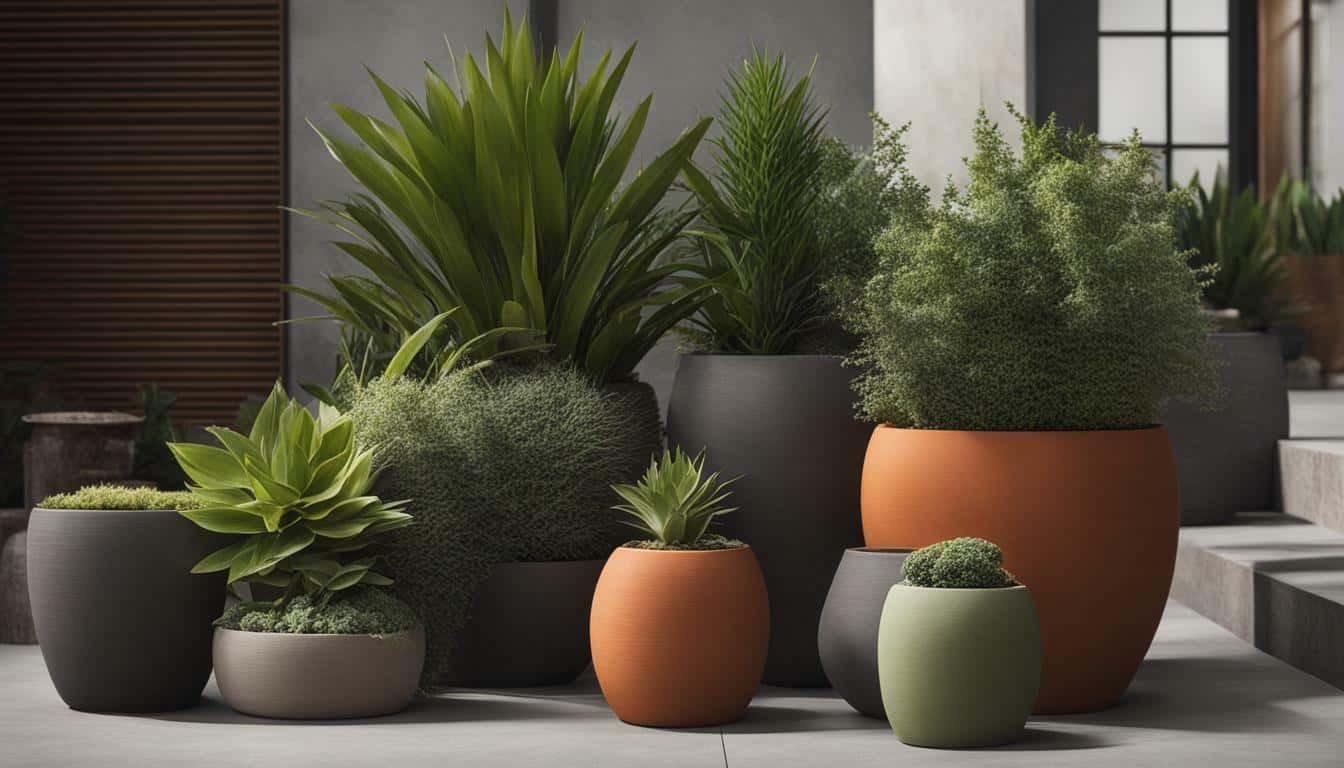
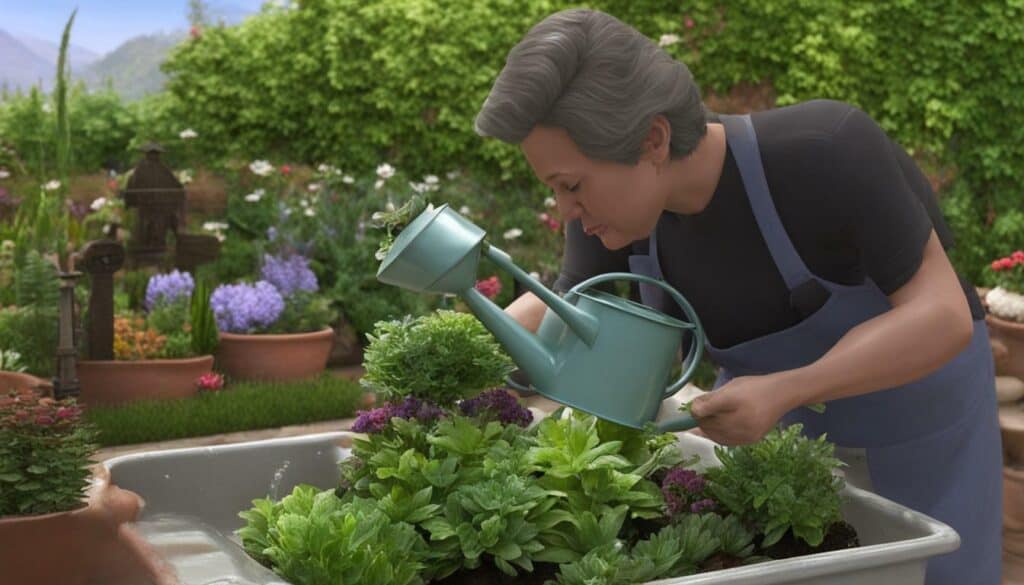 Adding Accents to Your Dish Garden
Adding Accents to Your Dish Garden


Leave a Reply